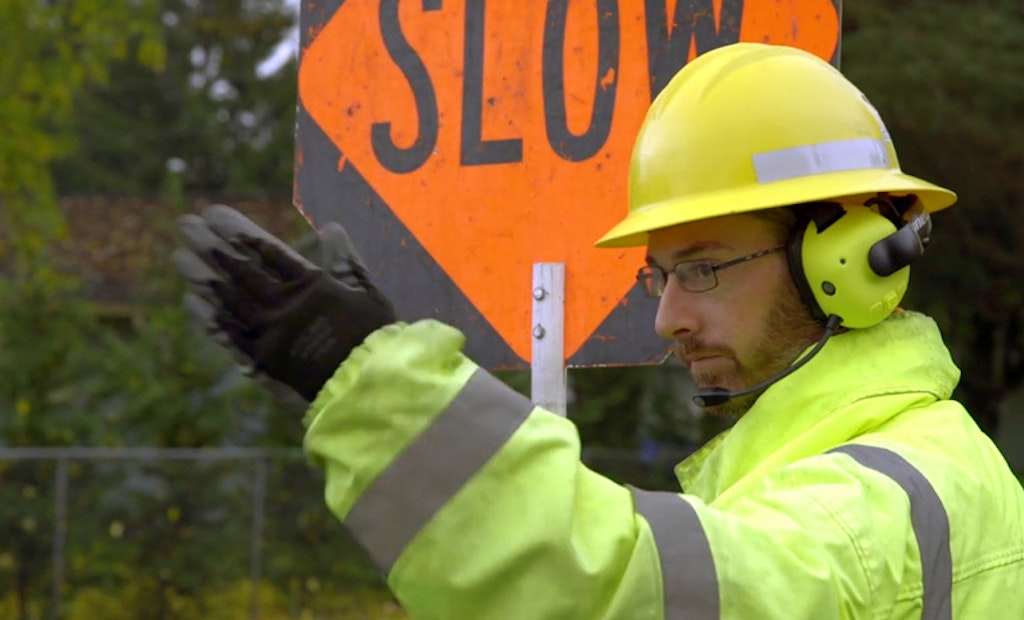Interested in Trucks?
Get Trucks articles, news and videos right in your inbox! Sign up now.
Trucks + Get Alerts“Don’t know what you got until it’s gone.” What do Cinderella and Passenger have to do with full-duplex communication? Both bands topped the charts singing about taking the simple things for granted. Like being able to hear and speak at the same time.
How many times have you had a call fail and not realize it until you stop talking? How many conversations have you carried on with someone who had left the room? You may feel foolish, but at least you realize that your message wasn’t heard. The real confusion and frustration occurs when you assume you were heard, or you’re unaware that there was a message in the first place.
During a face-to-face conversation, we rely on nonverbal cues to know if we’ve been heard and understood. A nod of the head, shoulder shrug, thumbs up or direct eye contact is all it takes to “roger that.” When we rely on verbal communication tools like cellphones or two-way radios, then we turn to verbal cues to acknowledge successful communication. “OK,” “right,” “gotcha” or even an actual “roger that” will do the trick.
Problems with verbal communication crop up when:
- The speaker can’t hear or understand those all-important verbal cues
- The transmission steps on, or “clips” a coworker’s attempt to speak in the same channel
- Transmissions are blocked or interference prevents reception
Glitches like these can lead to misunderstandings, frustration and accidents.
Full duplex: How it works
A duplex communication system allows two or more parties or devices to communicate in both directions. Picture a two-lane road. In a half-duplex system (two-way radios use half-duplex technology), communication moves in only one direction at a time, so one lane shuts down when someone talks. If you’re on a portable radio, the push-to-talk button opens up the transmit lane but shuts down the receiving lane.
In a full-duplex system, both lanes of the street are always open so that voice traffic can flow freely. Sonetics wireless headsets are hands-free, full-duplex systems thanks to the DECT7 wireless standard. At no time do users have to push to talk or dial a number to transmit. In fact, Sonetics headsets are multiplex systems. More than two people can communicate simultaneously.
For example, if you have 10 users on a large team wireless system, then all 10 users are free to transmit and receive in real time without restrictions.
Why full duplex is important to Sonetics headset users
Communication is more natural on a full-duplex system. It’s like having a conversation with a group of friends in your living room. Except for Sonetics users, a challenging work environment usually replaces a comfortable living room. High noise, treacherous surroundings and dangerous equipment are common to typical Sonetics users.
Making clear communication possible in places where it seems least likely improves safety, increases productivity and lowers stress. When the work is challenging, the last thing you need to worry about is whether or not your transmission was sent or received. Especially where safety is concerned.
Optimal use cases for full duplex communications
- Heavy equipment operation: Whenever an operator is not working alone, he or she is safer and more efficient when able to transmit on full-duplex systems. Precise maneuvering directions, spotter transmissions and conversations with other operators in close proximity require the instantaneous, real-time response that is only possible with a full-duplex system.
- Surveying: Survey teams of two or more people need full-duplex communications to discuss measurements, equipment placement and directions in real time.
- Road crew: Flaggers, operators, supervisors and laborers all have different responsibilities that rely on a sophisticated workflow. Full-duplex systems help safely navigate traffic, direct operations and avoid surprises.
- Tow crew: Whether you’re recovering a small sedan on the side of a two-track or turning over a big rig in the middle of a freeway, only full-duplex systems give you the ability to be clear and precise in all your maneuvers.
- Tree care: With one or more climbers working in a large tree while spotters and groundsmen circle below, coordination of safe zones, fall areas, where to tie off and when it’s safe to cut should only be trusted to a full-duplex system.
- Plant tours: There’s a lot going on in a manufacturing plant. Although guides will do most of the talking, full-duplex systems enable visitors and guides to engage in an interactive Q&A.
- Production line: A production line team relies on members exchanging instant notifications, equipment monitoring updates, check-offs and status reports. With so much going on, losing a transmission to a blocked out channel can result in safety hazards, loss of productivity and repeated work.
Interruptions save lives
Interrupting someone is rude. That’s why we say, “Excuse me,” before doing it (or we’re supposed to, anyway). However, etiquette takes a back seat to safety when you have to interrupt to prevent an accident. Correcting an order, shouting “stop!” or “watch out!” or prodding a teammate to run to escape danger are all acceptable breaches of etiquette. Unfortunately, if the person you are trying to interrupt is speaking through a half-duplex system, your attempts to interrupt may never get through.
Preventing accidents is a two-way street. Don’t take it for granted on either side.






